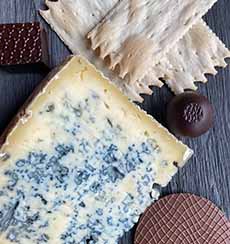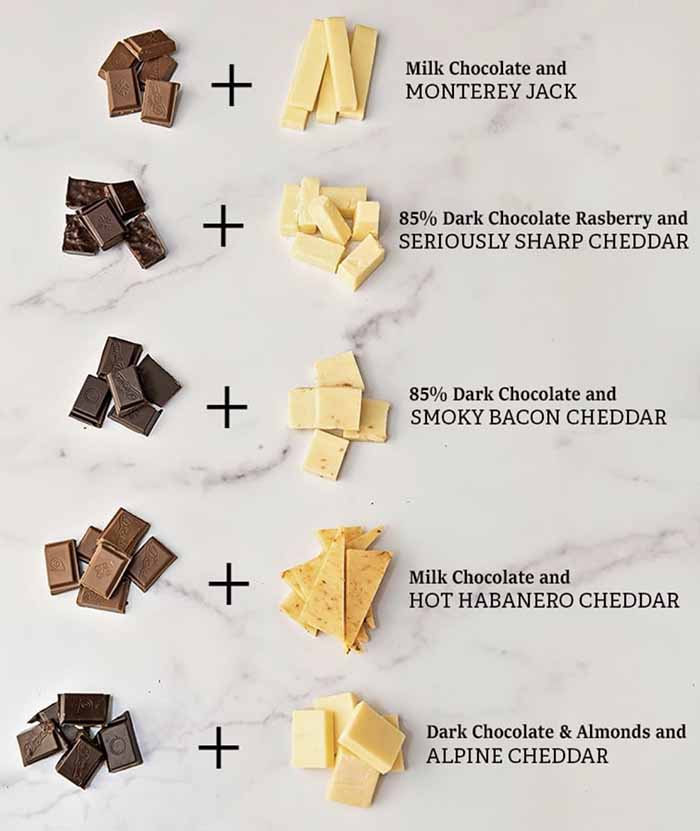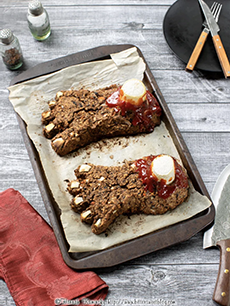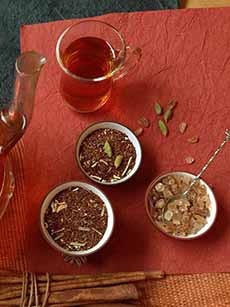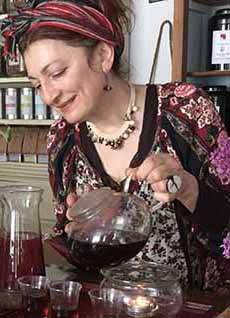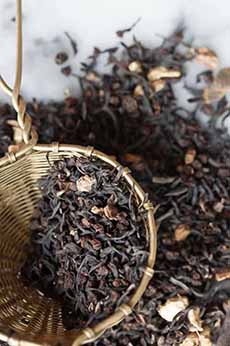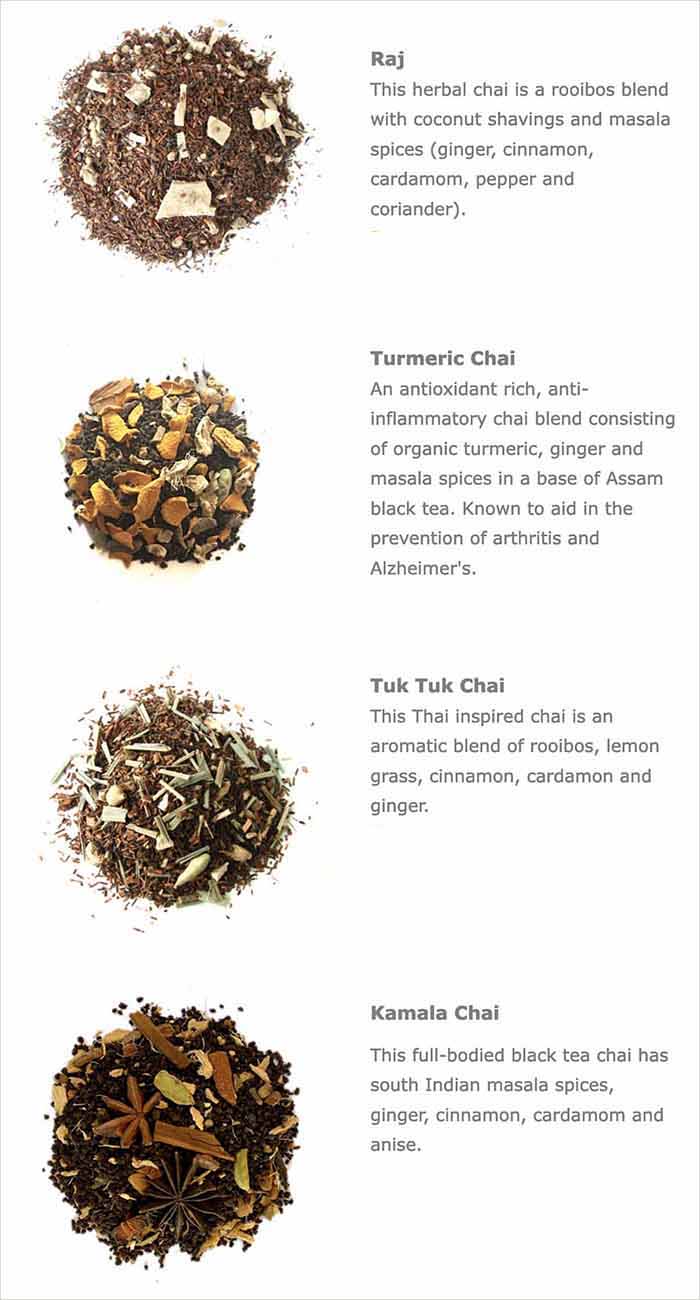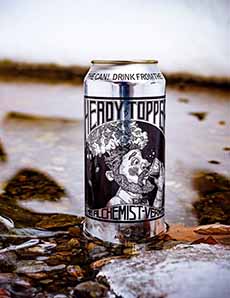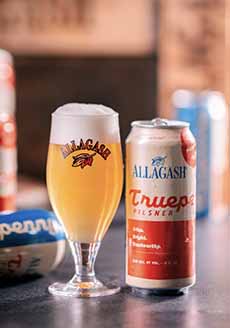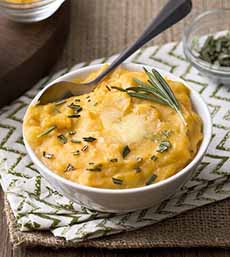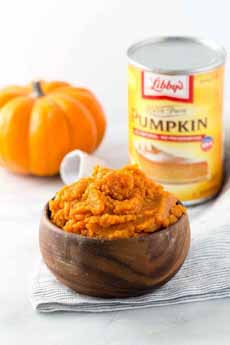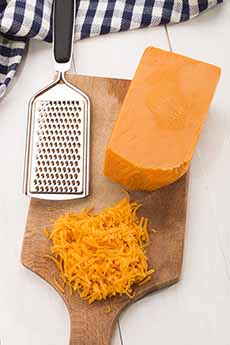|
Tay Tea offers some of the finest loose tea blends we’ve had. And they’re having a “fall sale” on their chai teas, through November 5th.
Tay Tea invites you to “steep, sip, and settle into fall.”
The options include two black tea-based chai blends and two caffeine-free rooibos blends. Each is custom-blended by master tea blender Nini Ordoubadi (photo #2).
Check out Tay Tea’s four chai blends in the chart below.
Then, head to TayTea.com and use the code FALLCHAI2022 at checkout (applicable to online sales only).
But before we leave, we have a bit of Food 101 and a masala chai recipe for you:
CHAI VS. MASALA CHAI: THE DIFFERENCE
In India, the word for tea is chai. That simple word refers to a cup of black tea, usually taken with milk.
Masala chai takes the flavor up a notch, with the addition of spices.
In the U.S., chai fans have referred to this Indian-spiced* tea with milk as “chai tea” or “chai latte.”
There are many variations of spices in a masala chai mix (as in any spice blend). The typical array includes allspice, black peppercorns, cardamom, cinnamon, cloves, ginger, mace, nutmeg, and star anise.
Every home cook, restaurant, and spice seller has a mix tailored to their (or their customers’) palates.
RECIPE: MASALA CHAI, CHAI LATTE, OR WHATEVER NAME APPEALS TO YOU
Here’s a recipe to blend your own chai spices from scratch.
Then brew the tea of your choice, infused with spices (use a spice ball/tea ball).
The garnishes suggested (milk froth, spices) are American additions.
Ingredients Per Mug
3/4 cup hot spiced tea
1/2 cup hot milk
Garnish: milk froth
Optional garnish: cinnamon or nutmeg
Preparation
1. ADD the tea and milk to a mug and stir to combine.
2. TOP with a heaping spoonful of milk froth (we use a frother, currently this one).
Don’t hesitate to vary the spices to your tastes. Personally, we love adding black peppercorns and star anise, which many people omit.
CHECK OUT:
> Chai recipes: food and beverages.
> The history of masala chai.
> The history of tea.
|
